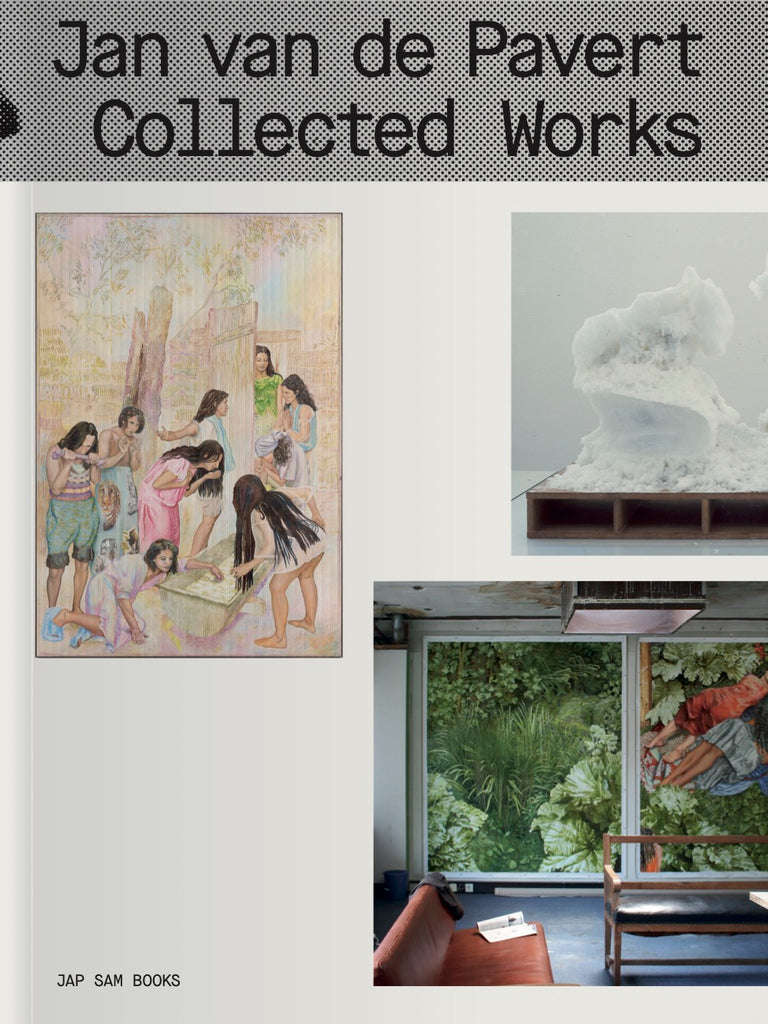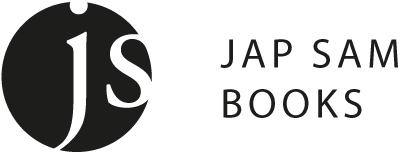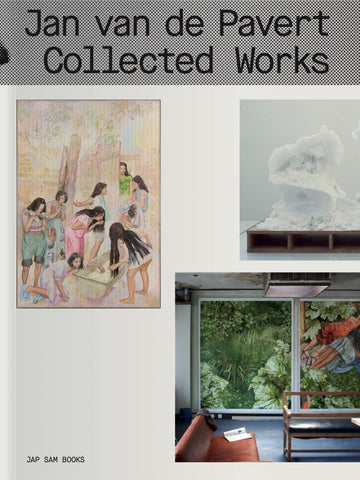Your cart is currently empty!
Jan van de Pavert. Collected Works
u++++++
+++Jan van de Pavert+++
+++
| A comprehensive illustrated monograph on the work of Dutch visual artist Jan van de Pavert.
| Beautifully designed by Studio Remco van Bladel i.s.w. Danique Merkestein & Elsa Baussier
Jan van de Pavert. Collected Works is a richly illustrated body of work covering the artist’s oeuvre of the past years. Initially, van de Pavert became known for his sculptures, his early works referred to architecture and resembled parts from buildings, such as windows and doors. An example is the 1987 work Inversion: the work is a door and doorpost folded inside out, for which an original door and doorpost were used as a mould.
Later, the artist decided to use these architectural elements in films as well and eventually started using computer animations. As this developed, he focussed more and more on murals. In an interview he justified this as follows: “I could put an entire exhibition in one film. While I was working on that, I decided to add murals to the spaces. I asked myself the question: if these spaces were covered with murals, what kind of iconography would they show? What would muralism, like Diego Rivera’s, look like in this day and age?”
A central topic in van de Pavert’s drawings is the development of figuration. He took historical paintings originating in earlier centuries as his starting point, asking himself: what do these works mean to our world right now? The themes he developed in response to this question play an important role in the publication.
Starting in the 1990s, he began working on watercolours that served for computer animated films. The representations in those watercolours were about the avant-garde movements and the political left. Later, he focussed more on youth, the 1960s and 1970s and the idea of freedom. In 2013, these murals were executed on large scale for the first time for an exhibition at Art Centre De Appel in Amsterdam. 20th century avant-garde clearly lives on through the artist’s oeuvre.
Jan van de Pavert (1960) lives and works in Rotterdam. He studied at Academy of Fine Arts Sint-Joost in Breda from 1979 to 1982, where he was taught by Hans van Zummeren and Theo Mols. From 1982 to 1984, he continued his studies at Ateliers ’63 in Haarlem with stanley brouwn and Carel Visser, among others. Van de Pavert established himself as an independent artist in Amsterdam in 1984. He moved to Utrecht in 1992, before he finally settled in Rotterdam in 1998.
€35.00
Jan van de Pavert. Collected Works
€35.00
| A comprehensive illustrated monograph on the work of Dutch visual artist Jan van de Pavert.
| Beautifully designed by Studio Remco van Bladel i.s.w. Danique Merkestein & Elsa Baussier
Jan van de Pavert. Collected Works is a richly illustrated body of work covering the artist’s oeuvre of the past years. Initially, van de Pavert became known for his sculptures, his early works referred to architecture and resembled parts from buildings, such as windows and doors. An example is the 1987 work Inversion: the work is a door and doorpost folded inside out, for which an original door and doorpost were used as a mould.
Later, the artist decided to use these architectural elements in films as well and eventually started using computer animations. As this developed, he focussed more and more on murals. In an interview he justified this as follows: “I could put an entire exhibition in one film. While I was working on that, I decided to add murals to the spaces. I asked myself the question: if these spaces were covered with murals, what kind of iconography would they show? What would muralism, like Diego Rivera’s, look like in this day and age?”
A central topic in van de Pavert’s drawings is the development of figuration. He took historical paintings originating in earlier centuries as his starting point, asking himself: what do these works mean to our world right now? The themes he developed in response to this question play an important role in the publication.
Starting in the 1990s, he began working on watercolours that served for computer animated films. The representations in those watercolours were about the avant-garde movements and the political left. Later, he focussed more on youth, the 1960s and 1970s and the idea of freedom. In 2013, these murals were executed on large scale for the first time for an exhibition at Art Centre De Appel in Amsterdam. 20th century avant-garde clearly lives on through the artist’s oeuvre.
Jan van de Pavert (1960) lives and works in Rotterdam. He studied at Academy of Fine Arts Sint-Joost in Breda from 1979 to 1982, where he was taught by Hans van Zummeren and Theo Mols. From 1982 to 1984, he continued his studies at Ateliers ’63 in Haarlem with stanley brouwn and Carel Visser, among others. Van de Pavert established himself as an independent artist in Amsterdam in 1984. He moved to Utrecht in 1992, before he finally settled in Rotterdam in 1998.



















